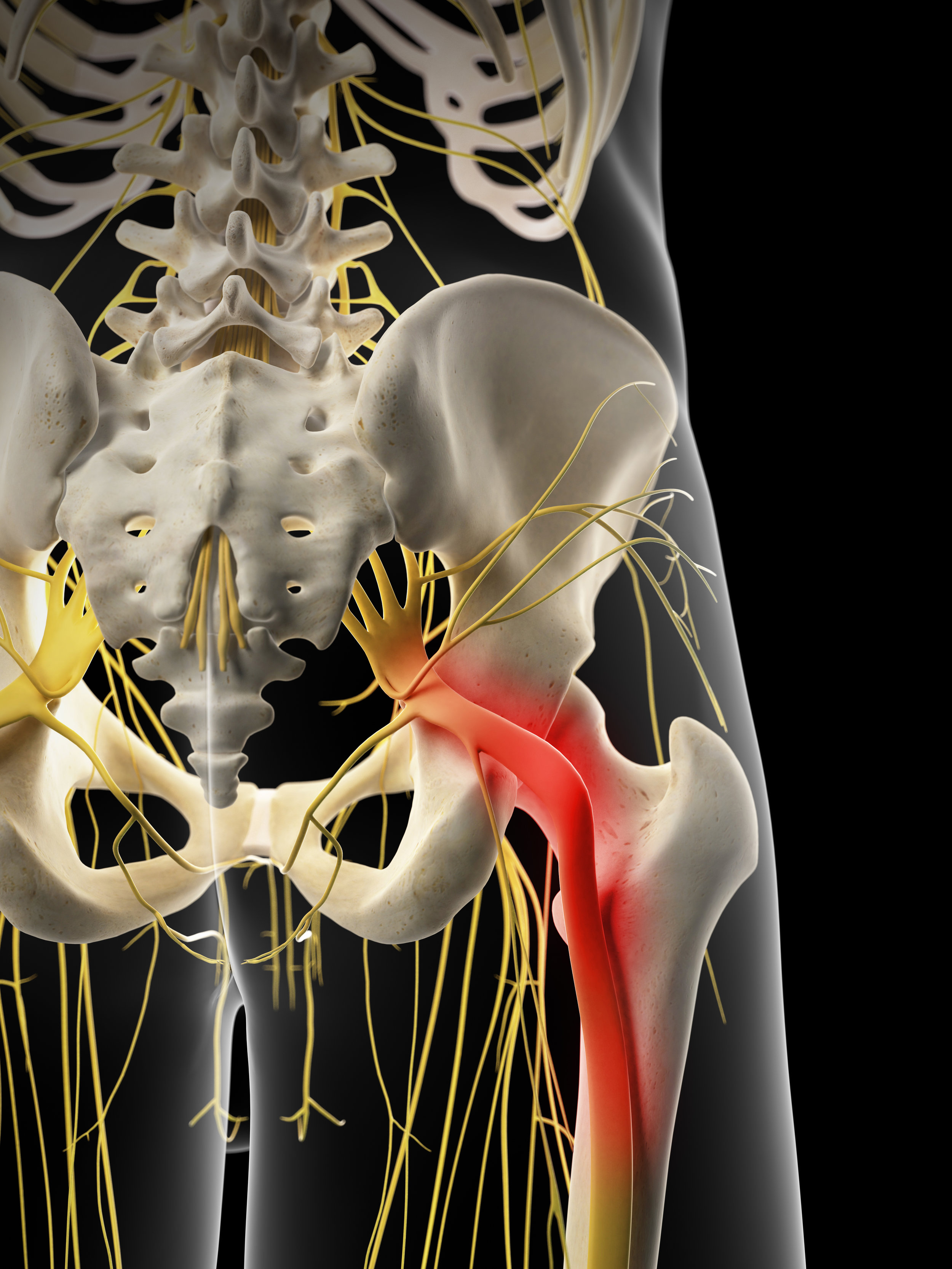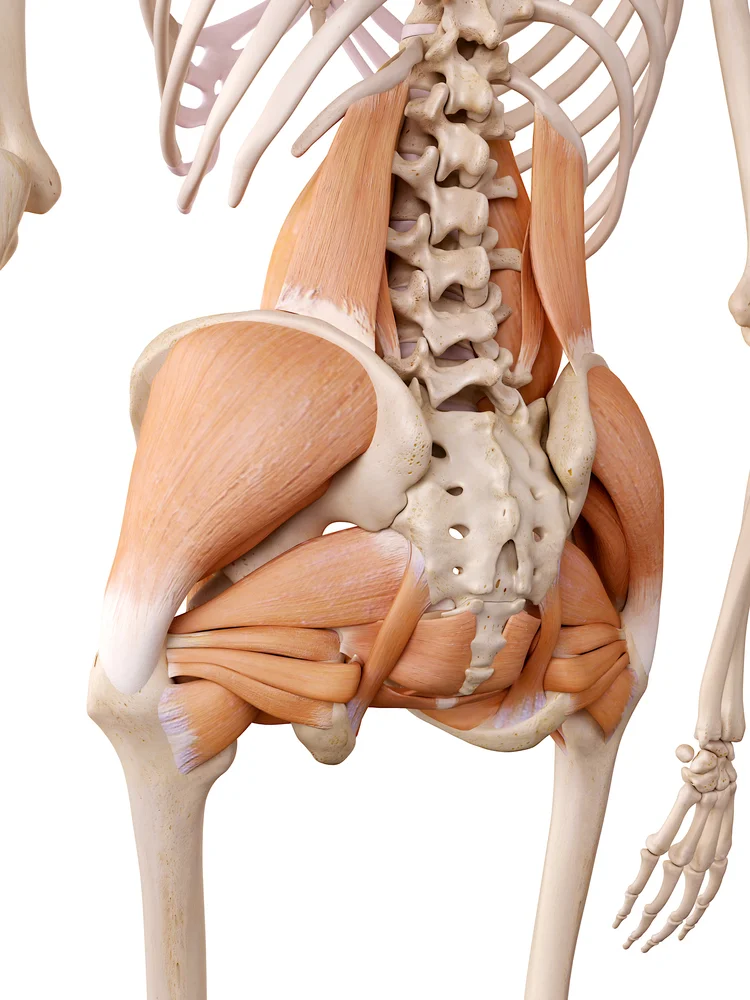WHAT IS SCIATICA?
Sciatica is the term used to describe pain that generates from the sciatic nerve. Many of us have felt this pain in the past, are currently experiencing it, or know someone close to us who constantly battles this sometimes debilitation and always frustrating condition.
Sciatic nerve pain is best known as the pain that seems to start at the low back and shoots down the leg, sometimes all the way to the foot. It can range from dull and ache, like a sore muscle, to a very distinct sharp, shooting sensation that can debilitate and stop a person in their tracks immediately. As the condition progresses, numbness, tingling can be present, and in urgent cases, weakness of the let. With that, low back pain with sciatica doesn’t just affect one area; it can radiate pain to the glues, hip, groin, hamstring, knee, calf, and foot…sometime all of them!
Now that we have a common, agreed upon definition, our purpose with this part of our Sciatica Pain Relief Series is to understand the anatomy involved, which we will review now.
BASIC ANATOMY OF SCIATICA
Ideally, sciatica would have one cause, but with everything else, it just can’t be that easy. While some believe that sciatic nerve pain comes from the back (it can and does), some tend to think it is from muscle and nerve ‘interaction’ somewhere along the course of the nerve as it exits the spine (it can and does that too). But with our hectic lives; the sedentary weeks to weekend warrior type lifestyle, sciatica is typically a combination of the two in what we typically refer to as a double crush injury. We will talk more on this in part two, but for now, let’s look at the anatomy of the lumbar spine and follow the sciatic nerve as it courses down the leg.
The Sciatic Nerve begins in the lower lumbar spine and is made up of nerves from multiple levels of the lower spine in what is called the sacral plexus. Having this many levels of nerves associated with one big nerve gives room for many areas for disruption. As the spinal cord courses through the spinal column, it can be compressed by a damaged intervertebral disc, bulging or herniated, if occurring at the lower levels (L4/L5/S1). From here, the nerve exit the spine through what is called an intervertebral foramen (or a hole in between the vertebrae), where discs, degeneration, and other pathology which we will discuss in part 2. As the nerves begin to come together, the sciatic nerve (now as big around as your thumb) courses through the posterior hip and down the leg.
When we work with patients dealing with sciatica, we give attention to the posterior hip because of the piriformis muscle and its relation to the sciatic nerve. Everyone and their grandmother have been diagnosed with ‘piriformis syndrome’, while an easy diagnosis to give, it is rarely the only reason for the pain we are experiencing. The reason for all the attention though is that sciatic nerve either courses over, pops out underneath, or in 12-17% of the population, pierces right through the piriformis muscle. From here it travels down the posterior compartment of the thigh to the knee where it splits into the tibial and common peroneal nerve, both of which have their challenges.
While this may be overkill for some, it is prudent to know that the likelyhood of your sciatica ONLY being a spine issue is dubious.
Enjoy this brief and basic anatomy lesson, let us know if you have any questions. We will tackle some of the most common causes and daily actions that make sciatica pain worse in part two of our Sciatica Pain Relief Series.
Dr. Reheisse is a Board Certified Chiropractic Sports Physician practicing in Cottonwood Heights Utah. Revive Sport & Spine provides evidence-supported chiropractic care and conservative sports injury management.




